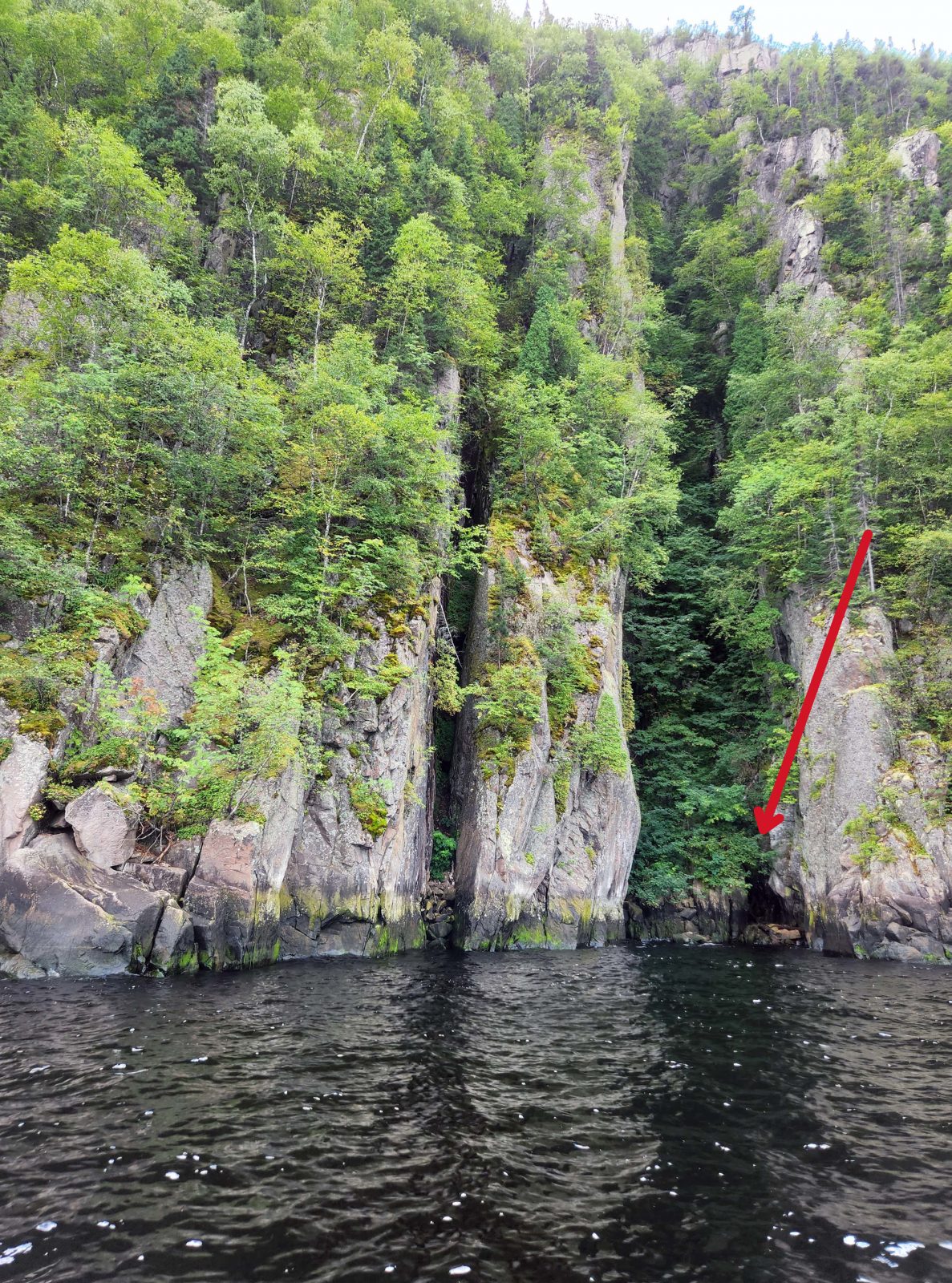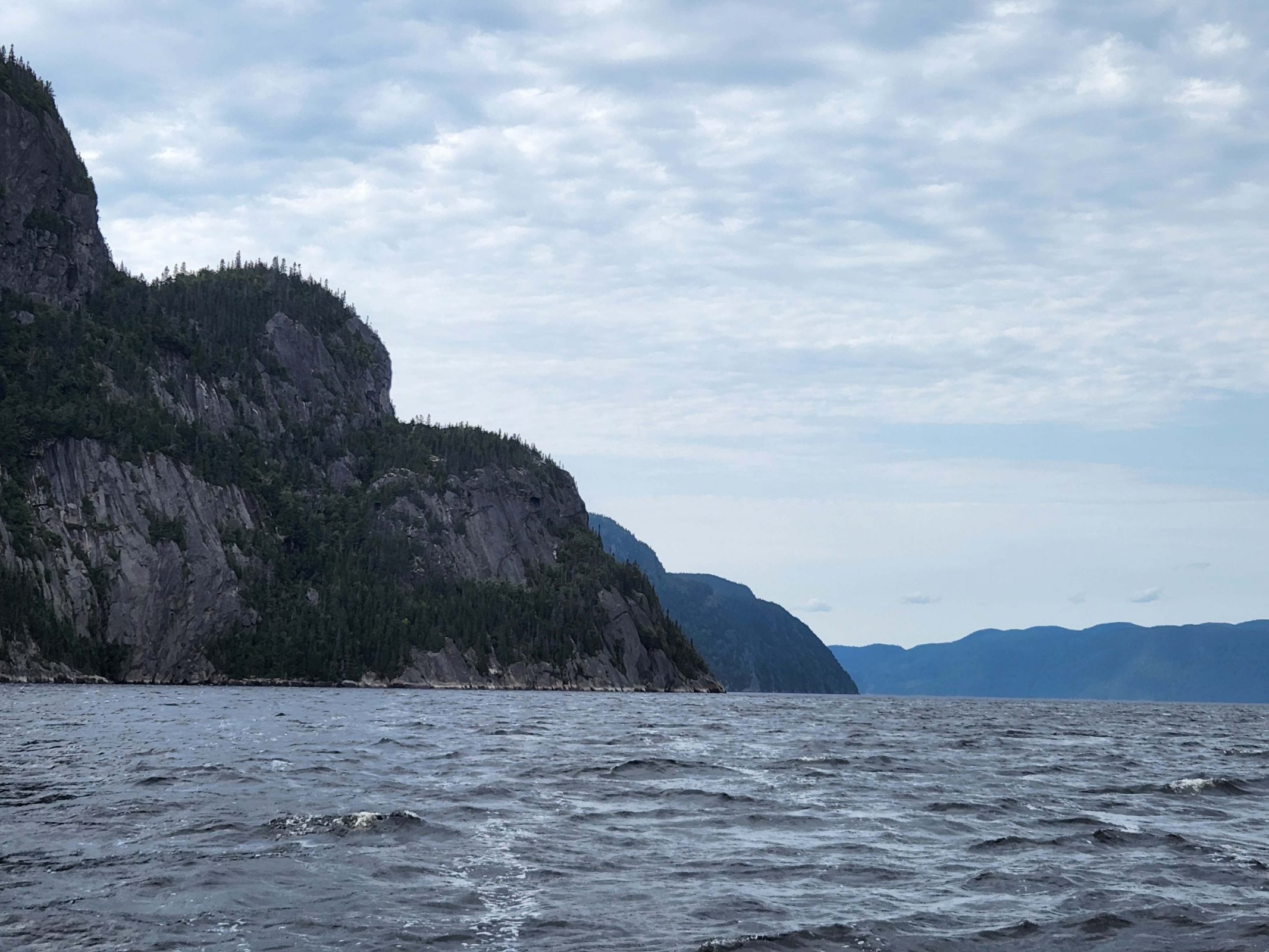fjord [fee’ ôrd] noun
A long (65 miles), narrow (1.2-2.5 miles), deep (690 feet) inlet of the sea (St. Lawrence River) between high cliffs (490-1,150 feet), typically formed by submergence of a glaciated valley.
That describes the Saguenay (SAG-en-ay) Fjord in Québec, Canada, one of the most southerly fjords in North America. Ted and I had so much fun on the jet boat tour of the Waimakariri Gorge in the Southern Alps of New Zealand, that we signed up for the three-hour jet boat tour of the Saguenay Fjord without giving it a second thought. The Canadian fjord boat was jet-propelled, but far less exciting than the New Zealand ride. I think that might have been in deference to the marine life in the Saguenay Fjord. Instead of 50 mph, the fjord boat went about 10-20 mph and the pilot didn’t do a single 360-degree spin. Still, it was a very pretty ride.

At the beginning of our fjord tour, we sailed around a high bluff, on which the pilot pointed out a rock climber. This is a popular place for rock climbers, and the pilot told us it usually takes about three days to make the climb. The arrow in the photo below indicates the climber, about halfway up. I guess he has another day-and-a-half to climb before he reaches the top. I took the first picture on the way into the fjord and the second on the way back to the dock. The climber made some progress (check his position relative to the notch in the rock) while we spent our time in the fjord.


Part of the boat tour took us through a relatively open area. The pilot explained that, in this area of Canada, gravity moved the ancient glaciers from west to east toward the Atlantic Ocean. The direction of the glacier’s movement determined the positions of the high and the low bluffs along the fjord, so the east side of the fjord is sloped and the west side is steep. It’s interesting that, although the Saguenay fjord flows into the St. Lawrence River, salt water from the St. Lawrence River flows beneath the fresh water of the fjord. Ninety-three percent of the water volume inside the fjord is salt water.

The pilot took us right up to the face of this bluff. The arrow points to a cave at the water line.

It was a pretty boat ride, weaving our way around the bluffs and, eventually, back to the dock at the end of the tour. The fjord is a sanctuary for perigrine falcons. Now we’ve toured a Canadian fjord and a Norwegian fjord. They are equally scenic, but Canada was warmer than Norway.

Author’s note: Saguenay has a population of about 150,000. Ninety-five percent of the population speaks only French.